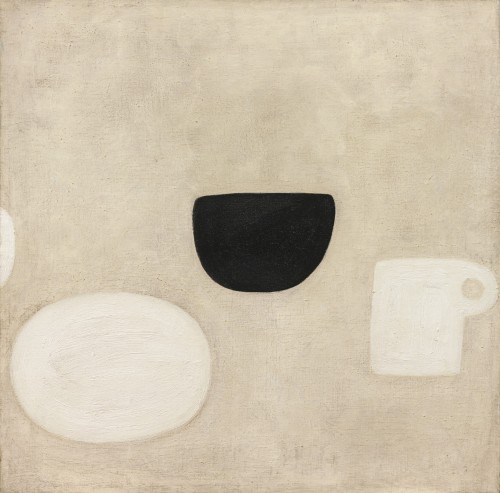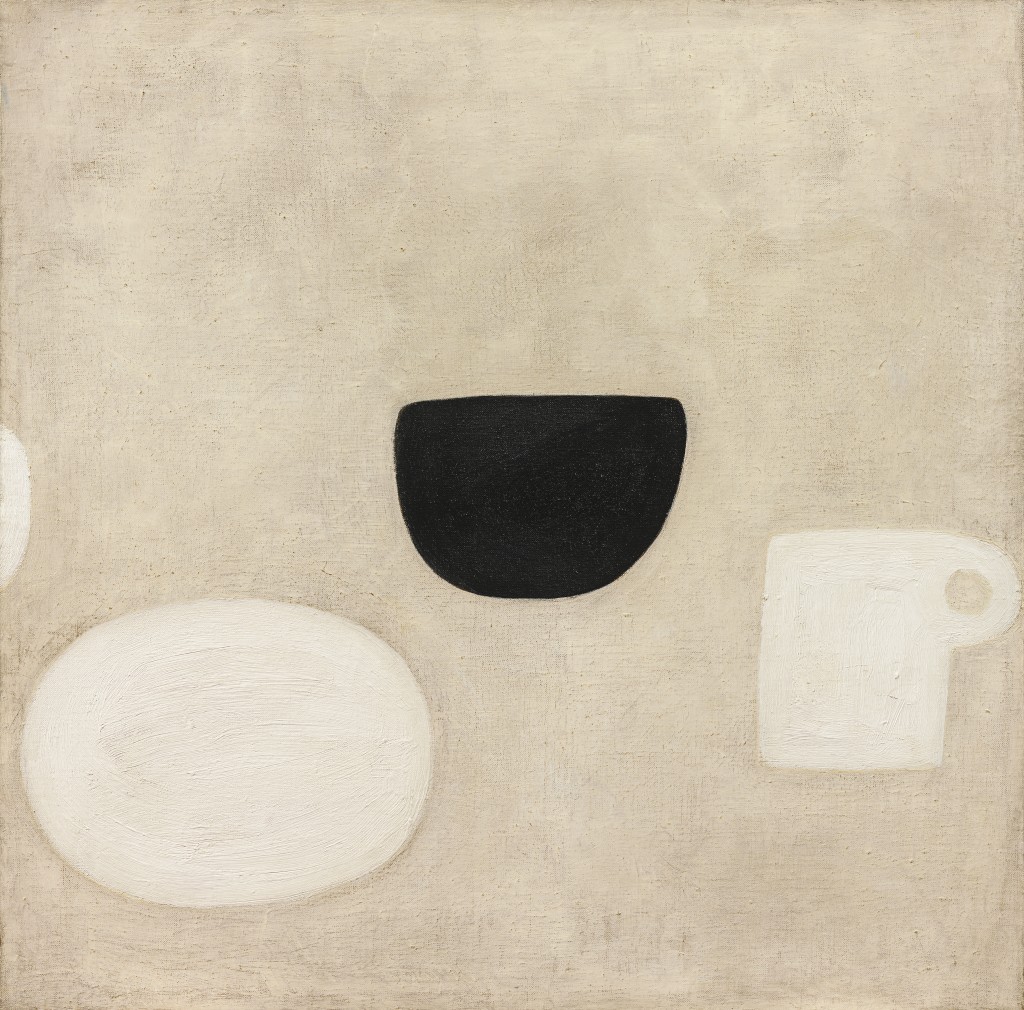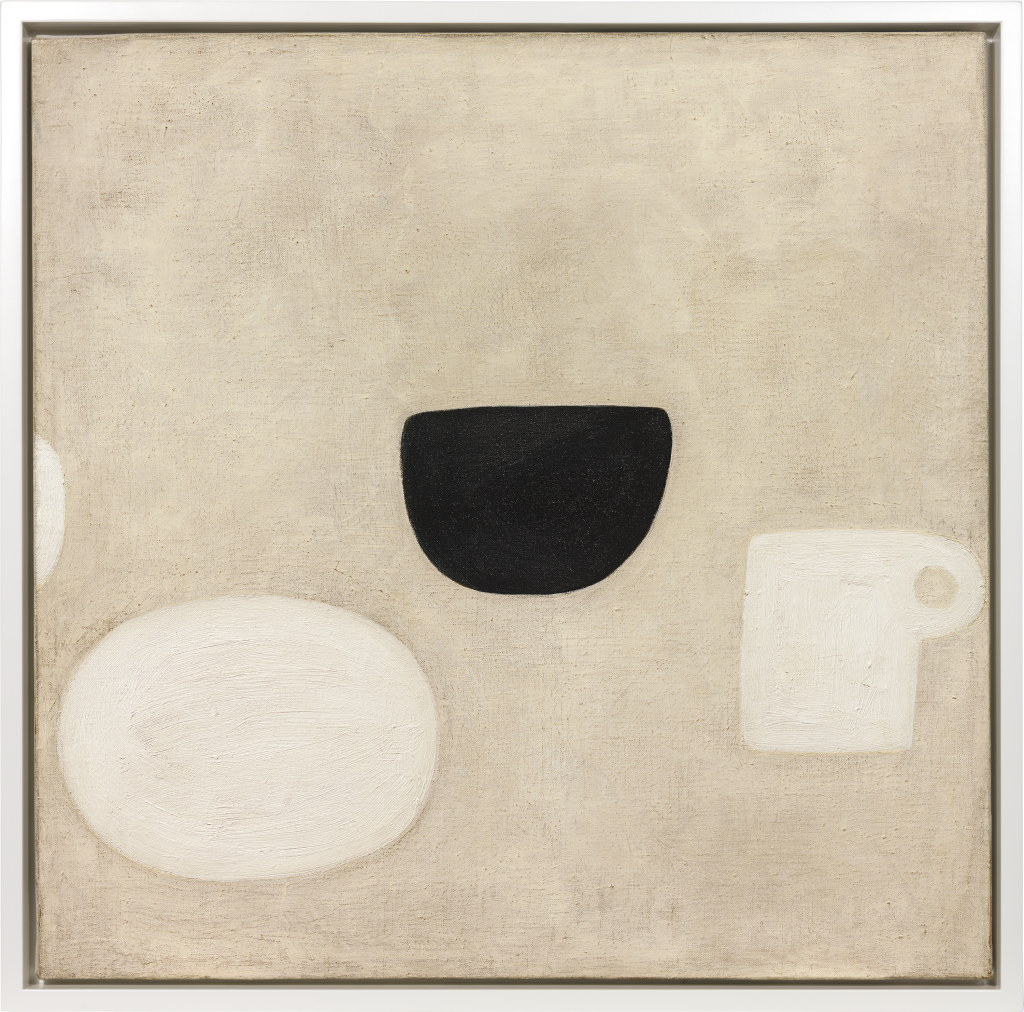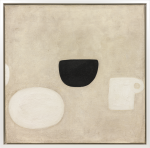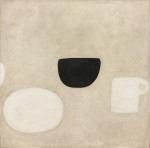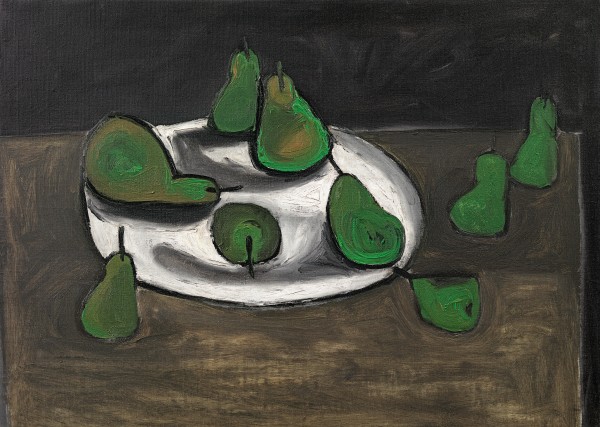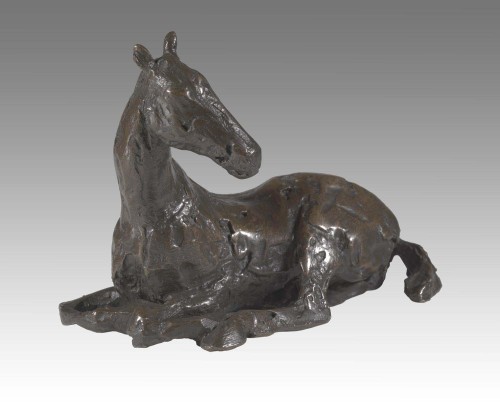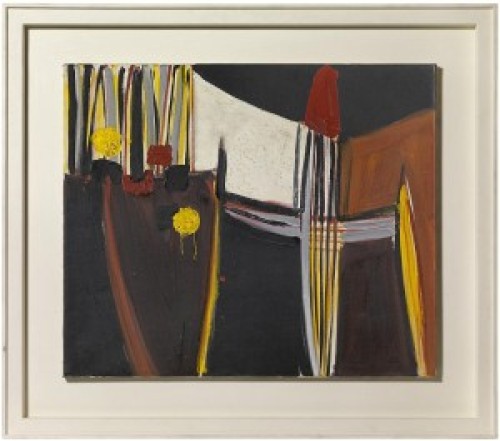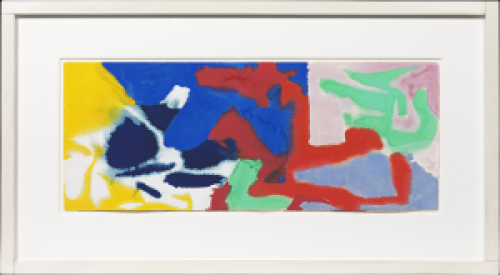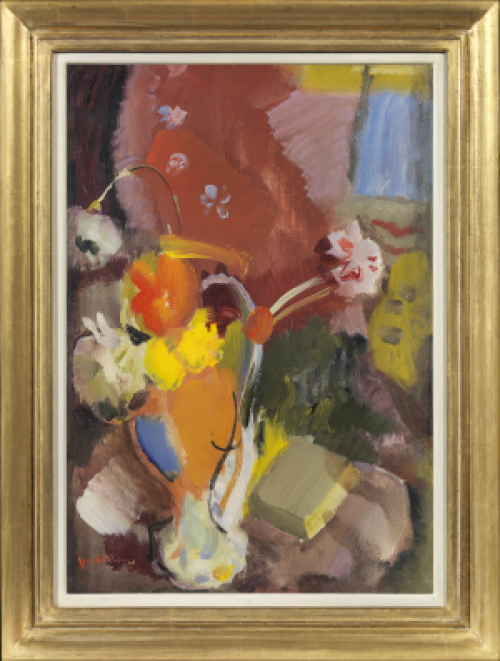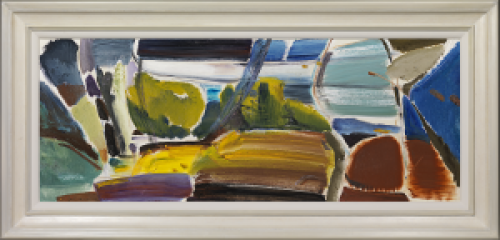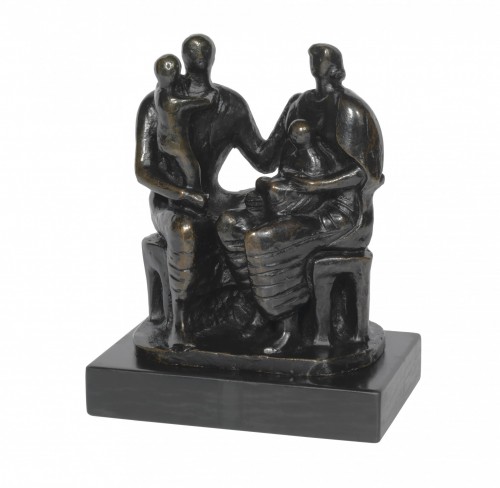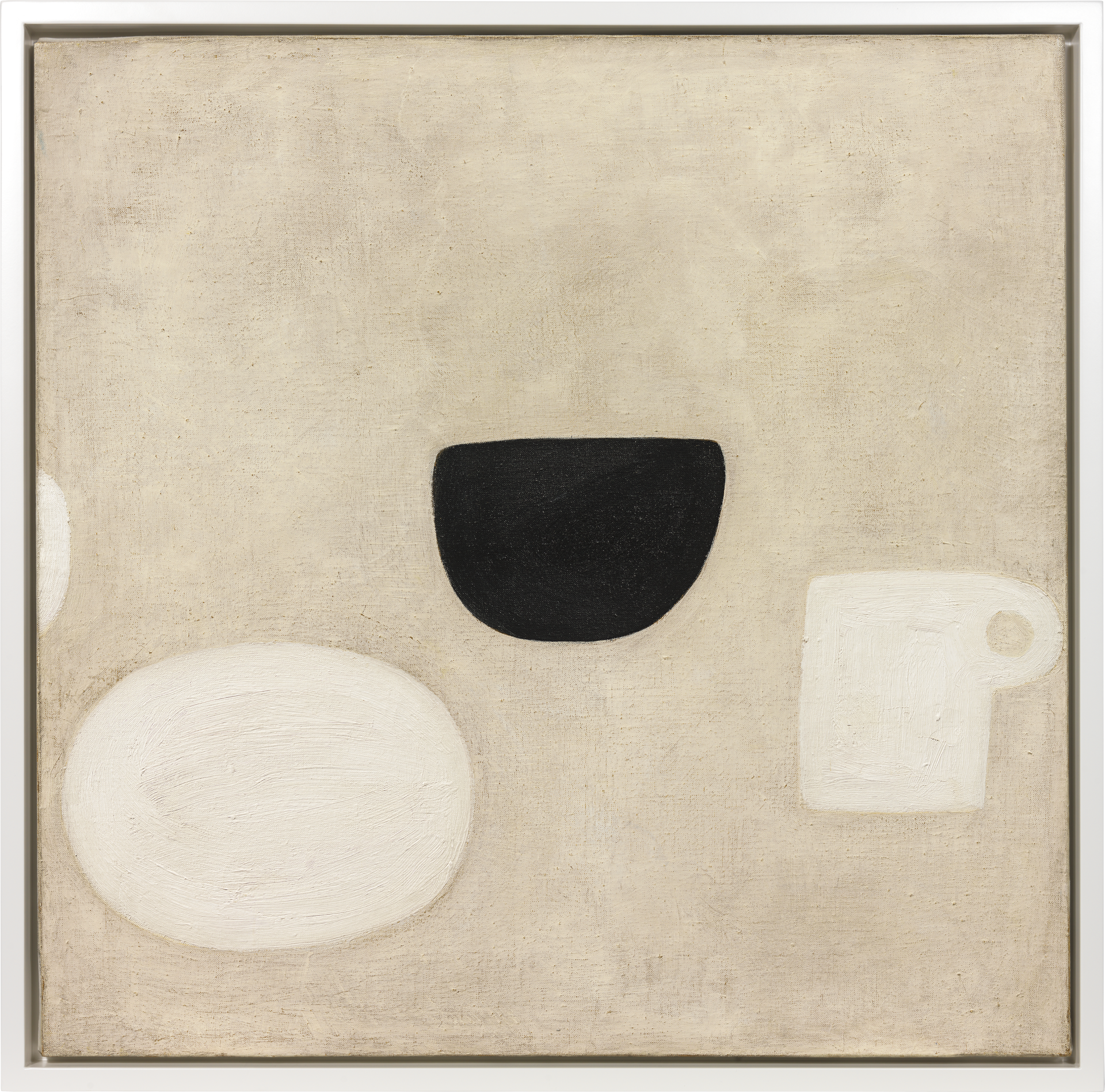WILLIAM SCOTT CBE RA
Greenock 1913 - 1989 Somerset
Ref: CC 161
Jar and plate
Oil on canvas: 25 ¼ x 25 ¼ in / 64.1 x 64.1 cm
Frame size: 26 7/8 x 27 in / 68.3 x 68.6 cm
Floated in a waxed and gessoed tray frame
Painted in 1971
Provenance:
Falchi Arte Moderna, Milan;
private collection, Milan
Exhibited:
Milan, Falchi Arte Moderna, William Scott, October 1972, no.20
Literature:
Marco Valsecchi, ‘Introduction’, William Scott, exh. cat., Falchi Arte Moderna, Milan, 1972, illus. in colour
Renzo Beltrame, ‘Alla Falchi di Milano’, Notiziario Arte Contemporanea, Edizioni Dedalo, December 1972, p.23, illus.
British Council Lecture, 1972, slide 71
Sarah Whitfield (ed), William Scott Catalogue Raisonné of Oil Paintings 1969-1989, vol. 4, Thames & Hudson in association with Wiliam Scott Foundation, London 2013, no.705, illus. in colour p.82
While William Scott remained devoted to the representation of still life subject matter throughout his career, his paintings from 1969 onwards drastically departed from his earlier investigation of the genre. The setting disappeared along with the table-top; the individual domestic objects reduced to flat symbolic forms in this second phase of abstraction, each an ordered variation on a new restricted theme or tonal contrast. Each form is perfectly placed, described with economy without being severe and set against a captivating colour-field. Norbert Lynton referred to the reductive and yet harmonious purity of this series of still lifes as ‘neo-classical’, expressing a kind of musicality in the distribution of ‘a few notes cleanly struck, at finely judged intervals.’[1] In this exquisite monochromatic scheme, Scott paints three still life forms across a luminous ivory ground. The curved, slightly asymmetric shape of a black bowl hovers in the centre of the serene, square composition, with the soft white forms of a cup or jug and a large, oval plate just below, almost touching the opposite edges of the light canvas. On the left, the curved edge of a dramatically cropped form is just visible.
The artist included this elegant painting in a lecture for the British Council to accompany his retrospective exhibition at the Tate Gallery in 1972, illustrating his recent work. For Robert Melville, writing on the exhibition for the New Statesman, Scott ‘remains the best painter of still life England has ever had.’[2]
[1] Norbert Lynton, William Scott, Thames & Hudson, London 2004, p.317.
[2] Robert Melville, ‘Pots and pans’, New Statesman, 5th May 1972.

